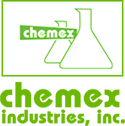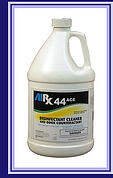 Use safe disinfectants in the classroom
Use safe disinfectants in the classroom
Photo by Governor Dayton
How to ensure a safe disinfectant protocol for your school/classroom. Why use safe disinfectants?
It's not surprising that we're experiencing an increase of infectious diseases in the classroom. The "bugs" have mutated to materialize in such a way that "old" cleaning methods and procedures are no longer effective. The chemistry (disinfectants) must be appropriate for the task. A person using the worlds best disinfectant without procedural knowledge, will fail at the job of disinfecting. A person with the correct procedural knowledge and an inferior product, will also fail. It's a marriage of the two, to ensure success. (Mark Warner)
Custodial personnel and teachers need to be re-educated in these protocols.
A few items to be aware of:
You can only disinfect a pre-cleand surface. Products like bleach have no cleaning efficacy.
A hospital Grade Disinfectant, for school/restroom application, must have a high level of cleaning ability: minimum 2 oz. per gallon for a concentrate. Use a RTU product for fixtures, touch points, desk tops and other materials being handled.
Look for the most modern disinfectant on the market. Know the pathogens needed to be eradicated in order to protect your environment. e.g. Acinetobacter Baumanni, ESBL, E-Coli, CA MRSA, Avian Flu, H1N1, Noro Virus, VRE, HCV, TB, Pertussis (Whooping Cough).
Use a neutral pH for optimum safety. High pH or acidic products are no longer necessary with the advent of modern quats. Be sure its a dual quat. Avoid phenolics, known to be corrosive and potentially carcinogenic. Avoid alcohol or other flammable components.
When using a mop bucket - do not cross contaminate - Eliminate foul odors
More to follow on this crucial topic...


